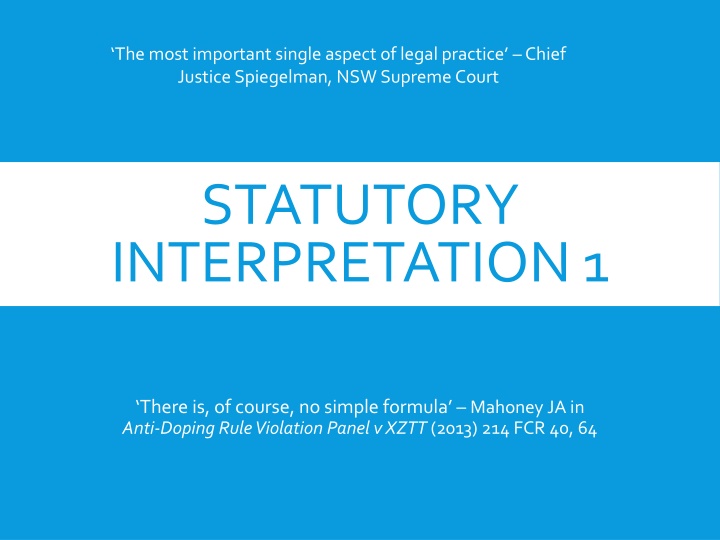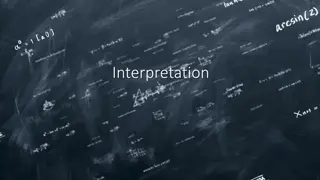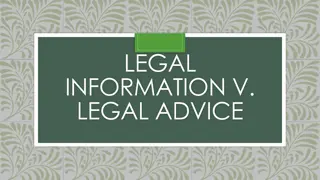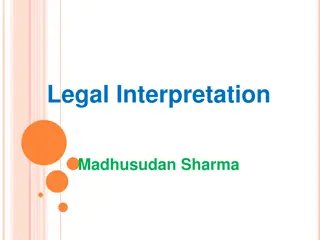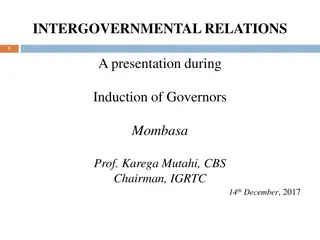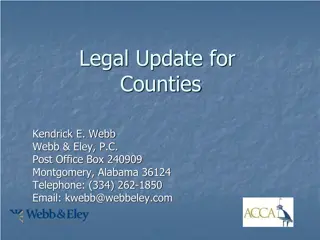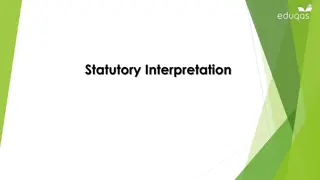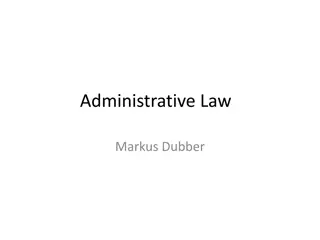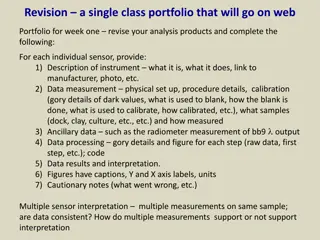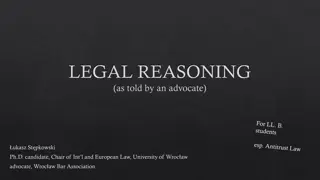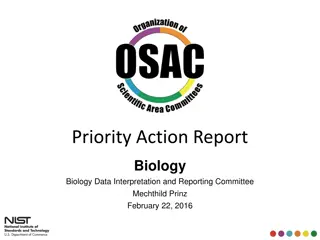The Essentials of Statutory Interpretation in Legal Practice
Explore the key elements of statutory interpretation, such as general principles and methods, central interpretive criteria, drafting tips, and the process of deciphering an Act. Learn about the anatomy of an Act, parliamentary drafting exercises, and what to expect in an Act. Delve into tips for drafting bills effectively, including the incorporation of technology in legal education legislation.
Download Presentation

Please find below an Image/Link to download the presentation.
The content on the website is provided AS IS for your information and personal use only. It may not be sold, licensed, or shared on other websites without obtaining consent from the author.If you encounter any issues during the download, it is possible that the publisher has removed the file from their server.
You are allowed to download the files provided on this website for personal or commercial use, subject to the condition that they are used lawfully. All files are the property of their respective owners.
The content on the website is provided AS IS for your information and personal use only. It may not be sold, licensed, or shared on other websites without obtaining consent from the author.
E N D
Presentation Transcript
The most important single aspect of legal practice Chief Justice Spiegelman, NSW Supreme Court STATUTORY INTERPRETATION 1 There is, of course, no simple formula Mahoney JA in Anti-Doping Rule Violation Panel v XZTT (2013) 214 FCR 40, 64
IN THIS SESSION ONE WE WILL: Examine the anatomy of an Act Groups : Parliamentary Drafting Exercise Introduce Statutory Interpretation: General Principles General Method Central interpretive Criteria
HOW TO MAKE AN ACT Drafting Parliamentary Counsel Bill on Notice Paper Proposal Second Reading First Reading Third Reading Royal Assent Proclamation
WHAT DO YOU EXPECT TO FIND IN AN ACT? Number Date Long Title Short Title Preamble Sections/subsections/paragraph/subparagraphs/clauses/subclauses Chapters/Parts/Divisions/Subdivisions Table of contents and Index Purpose or Objects Clause Definitions Schedules
DRAFTING TIPS Plain Language: simple, precise, direct and familiar No unnecessary words Sentences should not be long winded or with qualifications or exceptions Active voice (not passive) Avoid embedding Help readers- purposes sections, notes examples, summaries, overviews
DRAFTING A BILL: THE USE OF TECHNOLOGY IN RES SCHOOL Aim: Draft class legislation regarding the use of technology in the LAW112 Residential School. Things to think about: Principal or Amendment Act? Legal effectiveness, practicability, timeliness, certainty, comprehensibility, acceptability, brevity, debatibility, legal compatibility. Structure: Consequences EG what action constitutes a warning or removal of the item? Punitive dimension? EG penalties? Positive dimension? EG How rules support good learning? Specific Technology referred to? Eg laptops? Phones? Adjustments/exceptions to ensure substantive equality or formal equality? Let s pass it?!
HOW DO YOU DECIPHER AN ACT? General Principles General Method Central Interpretative Criteria
GENERAL PRINCIPLES: Multifactorial assessment where more than one construction available Not selective application but a judgment based on all relevant criteria Object is to determine the intention of the legislature Context of the provision and legislative purpose
GENERAL METHOD Work up from problems, not one-size-fits all Locate the provision Read it in context Identify relevant and multiple interpretative criteria for the problem Critically analyze how and to what extent those factors assist in determining the legal meaning of a provision Formulate opposing and available constructions of the provision in light of the indications of meaning gathered so far Compare constructions make a judgment as to which carries more weight and is to be regarded as expressing the legal meaning
CENTRAL INTERPRETATIVE CRITERIA Intrinsic guides of the provision and Act concerned The relevant Commonwealth, State or Territory Interpretation Act Acts Interpretation Act 1901 (CTH) Interpretation Act 1987 (NSW) Interpretative requirements of other relevant Acts of application such as a Charter of Rights Pre-existing, related or similar statutes and common law doctrines Interpretative principles and presumptions developed by courts including the principle of legality; presumption against retrospectivity; implied repeal Extrinsic materials Precedents in comparable cases Other contextual factors include the effect of any alternative construction (absurdity or injustice)
IN CONCLUSION? Difficulties in drafting legislation What statutory interpretation rules come into play in deciphering your answers? The reliance on central interpretive criteria
